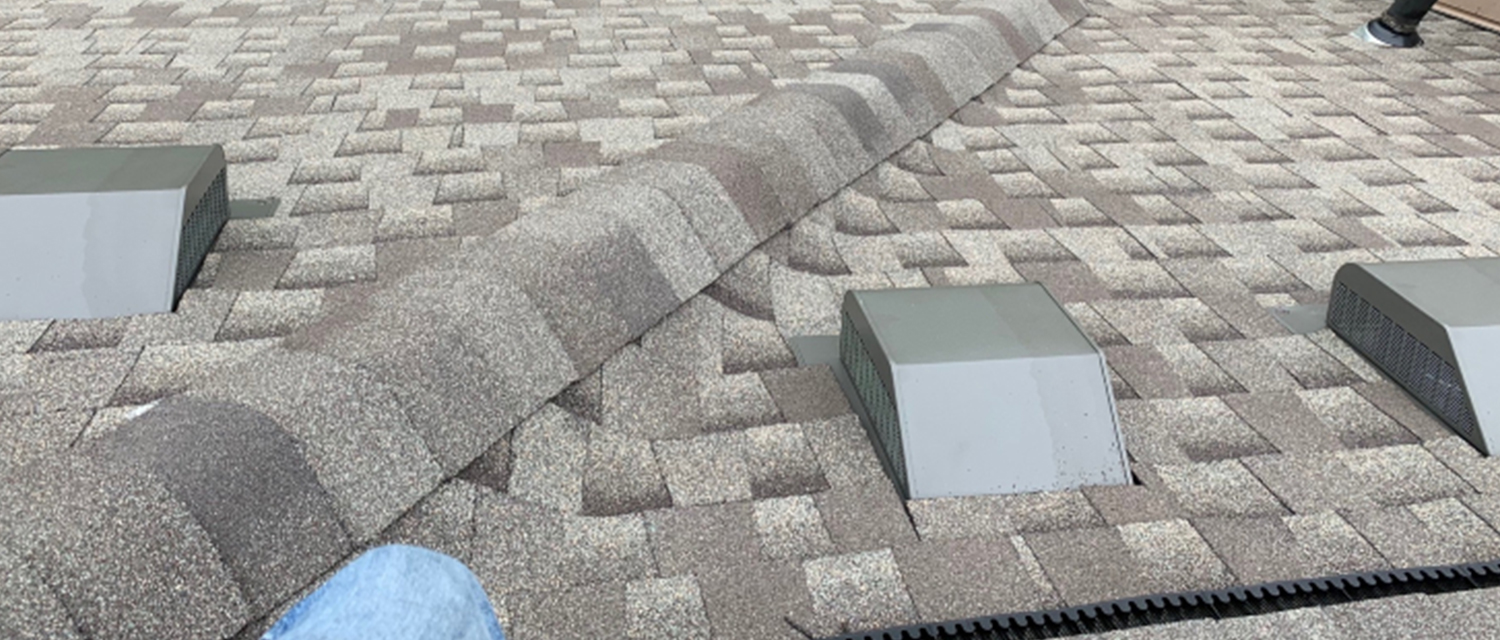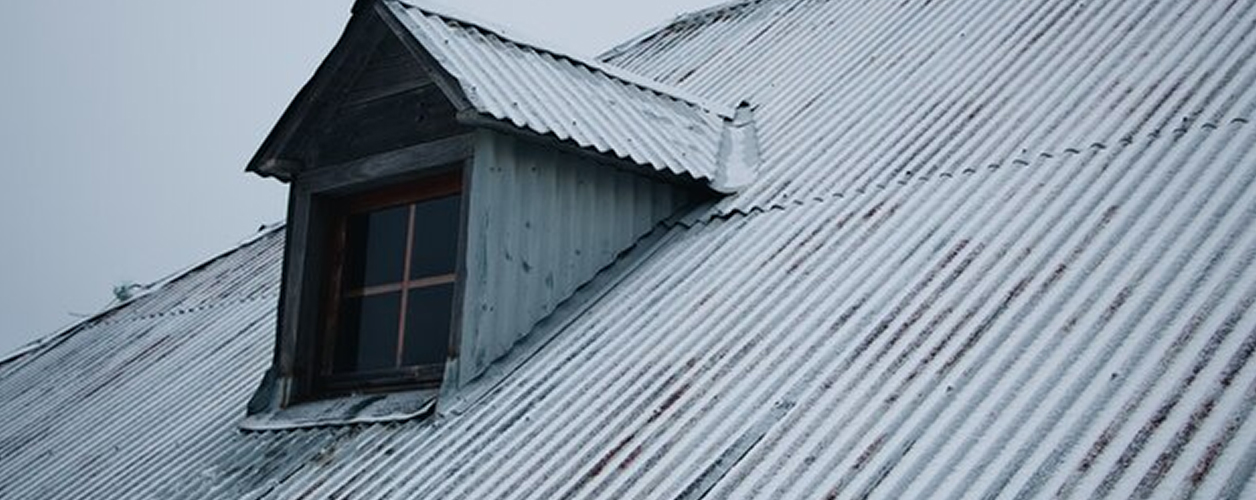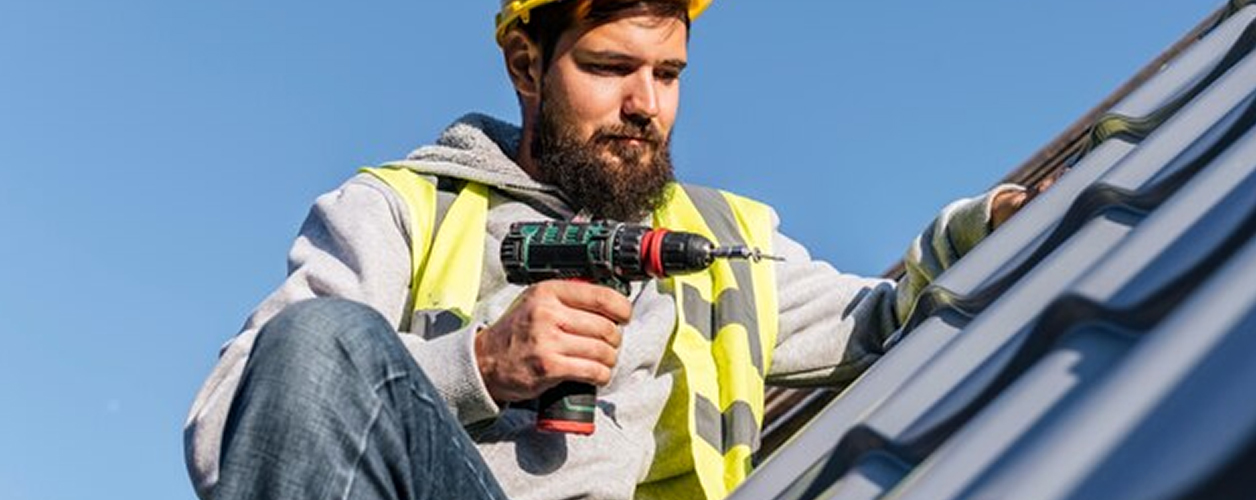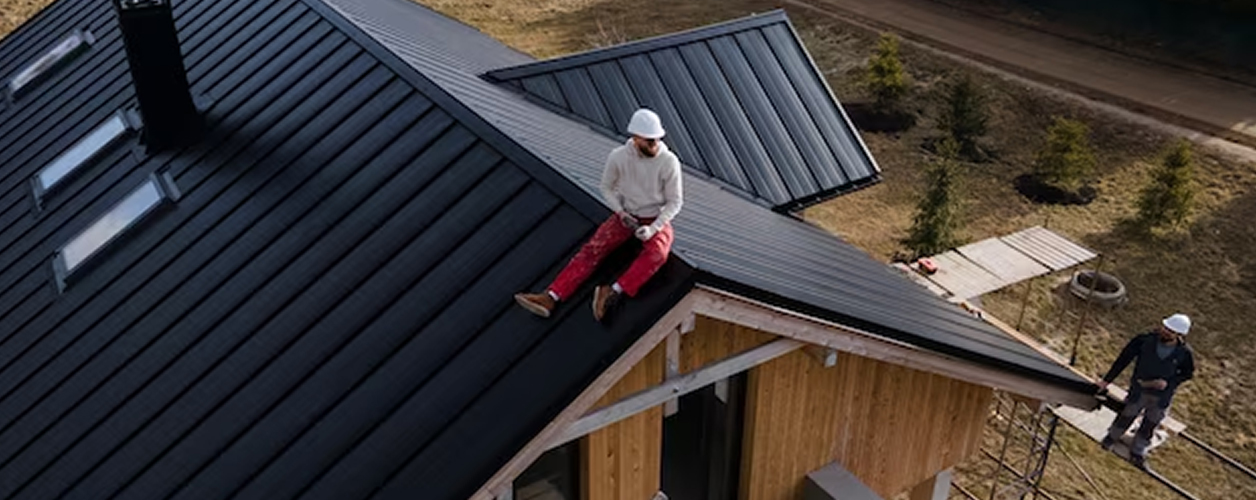Get free quotes within minutes
Signs of Poor Roof Ventilation and How To Fix Roof It?

Proper roof ventilation is essential for maintaining a healthy and comfortable living environment while protecting your home's structure. A well-ventilated roof regulates airflow, reduces moisture buildup, and extends the lifespan of your building by preventing issues like mould, rot, and heat damage. However, poor ventilation can lead to various problems, including excessive indoor heat, condensation, and high energy bills. In this blog, we will explore common roof ventilation problems, their causes, and practical solutions to fix them. Whether you're a homeowner or a builder, understanding these factors will help you ensure an efficient and long-lasting roofing system.
Types of Roof Ventilation — You Should Know
There are several types of roof ventilation to maximize airflow.
- Ridge vents: Warm air can escape through ridge vents that extend along the peak of the roof.
- Soffit vents: Cool air is drawn in by soffit vents, which are found beneath the roof overhang.
- Gable vents: To encourage cross-ventilation, gable vents are mounted in the gable end walls.
- Roof louvres and powered attic fans: Motorized attic fans and roof louvres forcefully remove hot air.
To provide an intake and exhaust system that is balanced for effective ventilation and climate control, be alert. It is important to choose a combination that works with the roof structure.
Roof Ventilation Problems– Detecting Earlier Is The Solution
Finding ventilation problems necessitates a thorough technique of Top-Rated Roof Restoration in Australia. Well, you need to start with the proper roof inspection and should check the warning indications. If mould indicates too much moisture, ice dams indicate not enough insulation. A hot attic is a sign of inadequate ventilation. Make sure the vents are dispersed equally and are not impeded. By finding these roof ventilation problems, you can earlier spot the problem and easily fix it. So that you can prevent possible structural damage and maintain roof ventilation.
Common Ventilation Problems and Solutions
There are also some common ventilation problems and solutions that we have mentioned below.
[1]. Air passageways and vents blocked
→Getting Rid of Obstructions and Trash
If you are unsure whether you have debris, check your vents and airways frequently. If you find any trash, you must also remove it. Trash and dirty, small items could impede airflow. So, you need to clean or remove that trash to improve the airflow.
→Installing Vent Guards to Protect
Trash and tiny animals must be kept out of vents if you want adequate protection. Protectors or covers are another option for this. You can ensure that the guards provide adequate defence without preventing airflow.
[2]. Insufficient Airflow
→Assessing Ventilation Requirements
Consider the size, number of occupants, and intended use of the space when examining the ventilation requirements specific to the area. Alternatively, if you wish to measure the rate of roof ventilation, professional assistance is required.
→Improving Existing Vents or Increasing the Variety of Vents
Add more vents strategically to improve dispersion and airflow. Install larger or more efficient vents in place of the outdated ones to meet the growing demand for ventilation.
[3]. Set Location of Vent Installation
→It’s Time To Set the Right Location For Roof Ventilation
For the greatest results, you must set the right location. By choosing the appropriate location for roof ventilation, you can see the difference. Additionally, you can do that by checking the airflow. It should be correct and should not affect the vents. If there is an obstruction, you need to clear it if you are willing to get results.
→Repair unnecessary openings and leaks
There could be more Roof ventilation problems, like irrelevant openings and leaks in the roof ventilation. But if you take some care, you can fix them all. Another option is sealing, and you can also try this temporarily. This will improve the airflow in the roof ventilation system.
The Relationship Between Insulation and Ventilation
It is a must that you know the insulation if you want to maintain the roof's ventilation. You must maintain a balance to precisely regulate the home environment. Also, there is a problem with over-insulation. It creates problems like excess moisture in the vents and affects the airflow accordingly. You must make sure that nothing is obstructing the vents to get the best results.
Benefits: Proper insulation and ventilation work together to enhance energy efficiency by reducing excessive heat buildup in summer and retaining warmth in winter. Without adequate airflow, trapped heat and moisture can lead to mould growth, wood rot, and even premature roof deterioration. Additionally, ensuring a well-balanced system can lower energy bills by preventing HVAC systems from overworking. Regular inspections and using breathable insulation materials can help maintain optimal ventilation while preventing common issues like condensation and ice dams in colder climates.
Materials And Methods: Choosing the right type of insulation—whether batts, spray foam, or reflective insulation—plays a crucial role in maintaining proper airflow. Some insulation materials, like closed-cell spray foam, can block ventilation if not installed correctly, leading to heat retention and moisture buildup. On the other hand, proper ventilation methods, such as ridge vents, soffit vents, and turbine vents, allow continuous air circulation, preventing stagnant air pockets.
Climate Considerations: It’s also important to consider climate-specific strategies. In humid regions, excess insulation without adequate ventilation can trap moisture, causing mold and mildew issues. In colder climates, poor ventilation combined with insulation gaps can lead to ice dams, damaging the roof structure. To maintain a well-regulated indoor climate, homeowners should ensure that attic spaces are ventilated, insulation does not block airflow, and vents remain unobstructed.
Smart Systems: Installing smart ventilation systems with humidity sensors can help regulate air movement efficiently. Regular inspections and minor adjustments, such as cleaning blocked vents or adding baffles, can significantly improve both insulation and ventilation performance, ensuring a healthier and more durable home.
Maintenance Tips For Roof Ventilation
You should do regular inspections for the upkeep of your roof ventilation system. As you account for changing weather patterns, evaluate ventilation efficacy seasonally. The most vital thing is that you need to get expert help if you have roof ventilation problems. This will ensure the best outcomes, protection from possible home damage, and a durable ventilation system.
- Remove leaves, branches, and other debris that may accumulate around vents and exhaust openings. Clearing these obstructions ensures that air can flow freely through the ventilation system.
- Inspect vents for any blockages caused by dirt, bird nests, or other impediments. Clean out any materials that may hinder the proper functioning of the ventilation system.
- Ensure that insulation in the attic is not blocking airflow. Proper insulation is important, but it should be installed in a way that allows air to move freely from the eaves to the roof vents.
- Check the flashing around vents and other roof penetrations. Damaged or deteriorating flashing can lead to leaks and compromise the effectiveness of your ventilation system.
For insights on maximizing the efficiency and longevity of your roof, check how to save money on roof repairs and replacements.
Do You Need To Hire a Specialist For Roof Ventilation Problems?
Yes, hiring a specialist for roof ventilation problems is highly recommended. Proper ventilation is crucial for maintaining a home’s structural integrity, preventing moisture buildup, and ensuring energy efficiency. While some minor issues like cleaning vents or replacing a damaged vent cover can be handled as DIY tasks, more complex ventilation problems require professional expertise.
Why Should You Hire a Specialist?
→Accurate Problem Diagnosis
A roofing specialist can accurately identify the root cause of ventilation issues, such as poor airflow, blocked vents, condensation buildup, or improper insulation. Without proper diagnosis, temporary fixes may only mask underlying problems, leading to bigger and costlier repairs in the future.
→Proper Installation and Repairs
Whether installing new vents, adjusting attic insulation, or repairing damaged ventilation components, professionals have the right skills and equipment to do the job correctly. Improper ventilation setup can lead to issues like excessive heat retention, mould growth, or even premature roof deterioration.
→Compliance with Building Codes
Specialists are familiar with local building regulations and ventilation requirements. They ensure that your ventilation system meets industry standards, helping you avoid potential fines or compliance issues during home inspections.
→Energy Efficiency and Cost Savings
Poor ventilation can increase your home’s heating and cooling costs by trapping heat in the summer and allowing heat loss in the winter. A professional can optimize your ventilation system, reducing energy bills and extending the lifespan of your HVAC system.
→Prevention of Roof Damage and Mold Growth
Improper ventilation can lead to moisture buildup, which promotes mould growth and weakens the roof structure. Specialists can recommend and install the right type of ventilation (e.g., ridge vents, soffit vents, gable vents) to maintain proper airflow and prevent long-term damage.
→Safety Considerations
Roof work can be dangerous, especially if you lack the right tools or experience. Hiring a professional reduces the risk of accidents, ensuring the job is done safely and effectively.
When Should You Call a Specialist?
You should contact a roof ventilation expert if you notice:
- Excessive heat buildup in the attic or home
- Condensation or mould growth in the attic
- High energy bills due to poor airflow
- Water stains or leaks near ventilation points
- Ice dams forming on the roof in winter
Conclusion
While small maintenance tasks like clearing vents from debris can be done yourself, addressing major ventilation problems requires specialized knowledge and expertise. Hiring a professional roofing contractor ensures your home remains energy-efficient, structurally sound, and free from moisture-related issues. Investing in expert roof ventilation solutions now can save you significant repair costs in the long run.
Capital Cities
- Roofing Contractors Services in Melbourne
- Roofing Contractors Services in Brisbane
- Roofing Contractors Services in Sydney
- Roofing Contractors Services in Adelaide
- Roofing Contractors Services in Perth
- Roofing Contractors Services in Canberra
- Roofing Contractors Services in Hobart
- Roofing Contractors Services in Darwin













